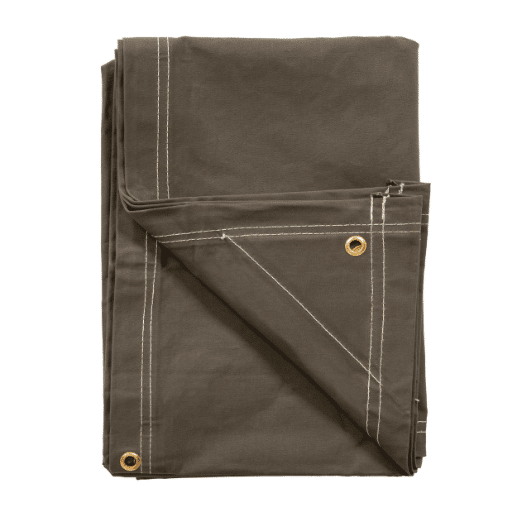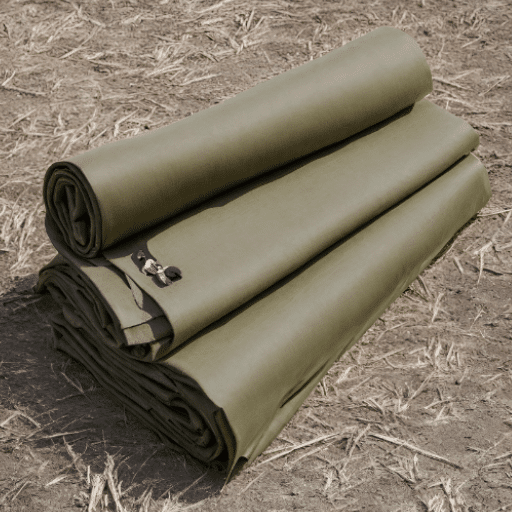Storing tarps effectively always poses a challenge when you try to keep your garage or storage area neatly organized. A lack of system can see tarps get tangled, torn, or misplaced, leading to frustration. Outdoor projects, camping gear, or just good old household needs-any way you see it, they’re terribly hard to store and take up quite some space. This article is filled with all kinds of tarp storage tricks to help keep your garage and other places neat and functional. From easy DIY-esque storage ideas to cool commercial products, we have something that really will protect those tarps and help you utilize every inch of storage space given to you.
Understanding Tarp Storage
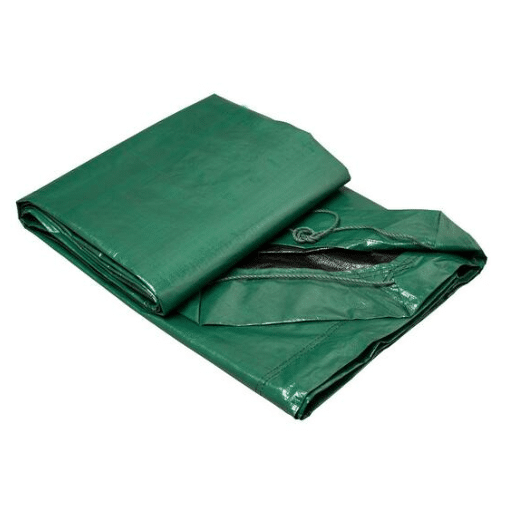
!
Importance of Proper Tarp Storage
Proper tarp storage ensures the longevity and functionality of your tarps. From recent insights and search data, most users seem to search for ways of tackling problems common in tarps, such as tear, mildew, and warping, usually caused by poor storage conditions. A tarp exposed to moisture, UV rays, or extreme temperatures will, over time, deteriorate from these effects and lose its ability to serve effectively, thereby forcing the owner to buy a replacement.
Another advantage of proper tarp storage is saving space and reducing clutter around your garage or storage area. Folding tarps properly should be done while storing them in a dry environment with good ventilation.
Storage options can include a bin, hooks, or a separate tarp shelf to keep them in top condition and quickly available when necessary.
⚠
Common Errors in Storing Tarps
Improper tarp storage leads to premature wear and tear in many instances, thus shortening their lifespan. One of such life-ending common errors is folding and storing tarps when they are still damp, giving them the opportunity to develop mold and mildew.
Another common mistake is to lay tarps out in full sun for extended periods so that UV rays weaken the material. Store away dirty or dusty tarps without cleaning, for these can abrade or chemically degrade the fabric over time.
Oftentimes, tarps are also stored in cramped or unventilated places wherein excess humidity would mark their accelerated decomposition. These are some of the more common pitfalls, so avoid them if you want tarps that will serve well for years.
+
Advantages of Proper Tarp Storage
Good tarp storage promises a few long-term benefits that keep your money safe for a rainy day. Proper tarp storage allows the tarps to maintain their structure, meaning they are less prone to tears or degradation upon reusing of a tarp. Thus, the tarp storage prevents frequent cost of replacements.
Furthermore, tarp storage also keeps it clean and dry to avoid mold and mildew damage, which would also affect the look and performance of the material. Recent data indicated that queries about “how to clean and store tarps” and similar subjects have skyrocketed, implying a great deal is being given to maintenance for durability.
In addition, storing items efficiently saves you a lot of time because well-organized tarps are easy to get to when you need them. The slightest investment of time in storing tarps efficiently greatly increases their lifespan and functionality, thereby exercising the utility of the tarps by having them ready for use.
Creative Tarp Storage Solutions
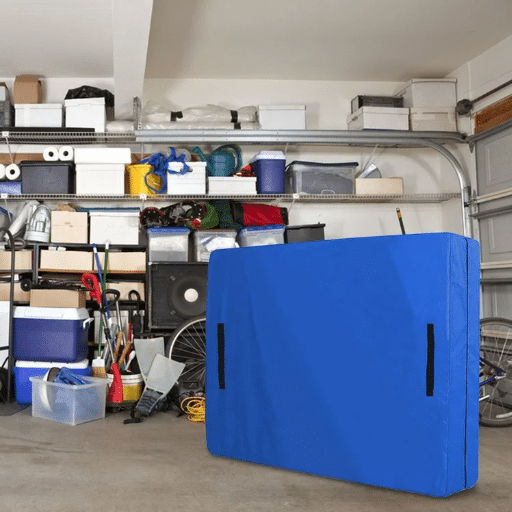
🔧 DIY Garage Storage Ideas
With growing interest in creative tarp storages, several DIY ideas work to save spaces and keep the tarps handy. A very popular method is to hang tarps on the wall using hooks or pegboards. From google search trends, it looks like many people are looking for vertical storage options just to keep floor space free in their garages.
Another way is to use the PVC pipes to build a custom tarp rack. By cutting the pipes to the right size and locking them down either on shelves or walls, you can roll and slide tarps into these compartments for neat organization. These methods of DIY not only resonate with the growing search keywords for tarp management but also give cheap and innovative ways to have your tarp ready for the next task.
🏠 Outdoor Storage Alternatives
Latest data from the Search Engine says about many people searching for creative and efficient solutions for outdoor tarp storage. One of the highly searched options is to use heavy-duty storage bins with waterproof lids to keep tarps away from moisture, dirt, and UV rays. These bins are stackable and even labeled for easy identification and quick access.
Another option is to put up wall hooks or a pegboard system in an outdoor shed so the tarps can be hung and kept off the ground to prevent mildew buildup. Complementing those with bungee cords or straps will keep the tarps secure during storage. These solutions balance function with budget, keeping your tarps organized and in excellent condition for outdoor use.
📦 Small Space Solutions
Small spaces foster creative and multitasking storage solutions that keep it all in place. Compact storage systems such as stackable bins, folding shelves, and under-bed storage containers work wonders when the space is tight. According to the latest data, modular furniture with storage, such as ottomans or beds with drawers, has been increasingly sought after for small homes and apartments.
They do an excellent job of saving space and improving the ambiance at the same time. Vertical storage, including wall racks or over-the-door organizers, is another widely searched option for small kitchens, bathrooms, and closets. These systems merge saving space with utility and are lean on style but somehow keep your space neat.
Step-by-Step Guide to Folding and Storing Tarps
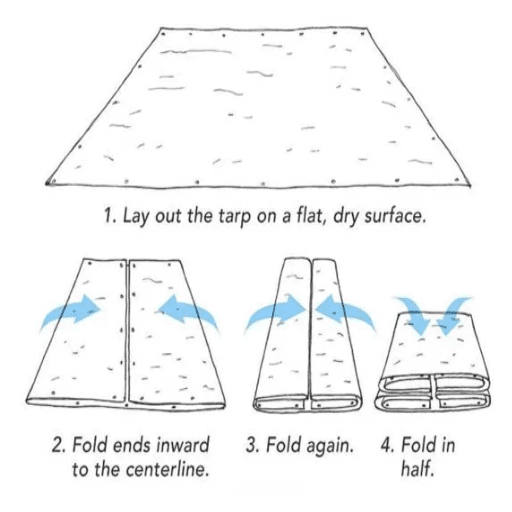
📋 How to Fold a Tarp Properly
A correct tarp folding procedure keeps it clean, compact, and prepared for storage and further usage. According to the latest search trends, people look for quick ways to fold and store tarps effectively without ruining the tarp. Here is a step-wise procedure:
- Cleaning: Before folding, ensure that everything is dirt-free, water-free, and debris-free. Use either a dry cloth or a damp cloth to wipe off the tarp. If not, let it air-dry completely. Storing a wet tarp leads to mold and mildew.
- Spread It Flat: Spread the tarp flat on the ground. Try to smooth off wrinkles and any creases-softer folding.
- Fold Along Length: Fold the tarp in half along the length, neatly versatile edges. It is used to reduce the width of the tarp for further folding.
- A Second Lengthwise Folding: Repeat folding lengthwise until the tarp has reached the desired width, usually about 2-3 feet, for easier handling.
- Fold Along Width: Fold crosswise in short increments until you have gone through the entire length of the tarp. Be sure to keep all folds evenly spaced and compact.
- The Critical Step – Secure the tarp: Tie down bungee cords, straps, or even a piece of rope to hold the tarp together so that it will not unravel and also be easier to handle when finally storing it.
- Store Properly: Do not expose the tarp to direct sunlight but store it within a dry, cool place.
All these steps are to be followed to fold a tarp efficiently, maintaining the tarp’s strength and making sure it is good for use whenever needed.
📐 Rolling vs. Folding: Which is Better?
When considering whether rolling or folding is better for a tarp, the answer depends upon your specific needs for using or storing the tarp. According to recent search data, tarps are generally folded when kept short-term for storage and would be better organized in a compact, stackable shape. If you want to keep your tarp stored in a tight space or carry it around easily, folding is your best bet.
However, rolling is better for long-term storage as it cuts down on creases and wear that might be inflicted on the material. When the tarp is rolled, the stress is distributed more evenly over the fabric material, which limits the chance of cracks or permanent creases coaster whilst being stored for periods. Rolling becomes an advantage for heavy-duty tarps or materials that might become hard if folded for a long time.
Basically, whether to roll or fold depends on the tarp’s material, the use really intended for it, and duration of storage. Rolling will probably be the best option if protecting the tarp’s integrity for a prolonged period is the priority. Folding is more convenient in terms of ease of carry.
🏷️ Using Tarp Markers for Identification
Tarp markers provide a very functional way of labeling and identifying different tarps in relation to their size, purpose, or condition. The markers can consist of easily washable paint, permanent markers, or more specialized labelling systems that will remain in effect irrespective of weather conditions.
Recent data show huge prioritization of waterproof and UV-resistant types of markers by users so that the labels stay legible in the long term-outdoor context. The harsher the environment on the tarp, the more important it becomes to mark in areas least prone to wear, for instance, along reinforced edges.
Tarp markers, in combination with good labeling, make it worth investing time in the search for some of your tarps, whether for camping, construction, or agricultural use.
Tools and Methods for Tarp Storage
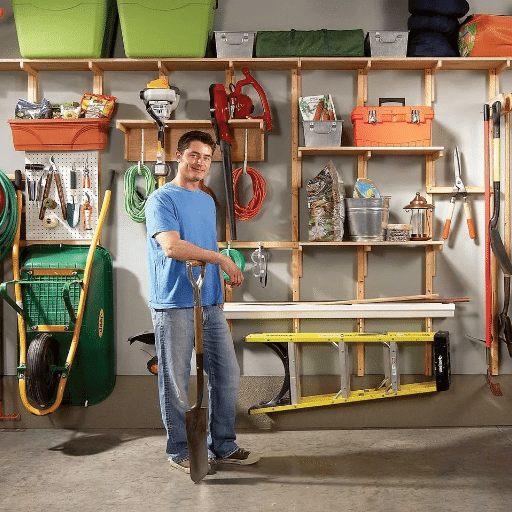
📦 Best Storage Bins for Tarps
Keeping with current search trends, users mostly consider durable and waterproof storage bins as their first preference to keep tarps organized and secured. Best options generally consist of boxes that are high-density polyethylene (HDPE) or weather-resistant plastic because of their high durability against moisture, UV rays, and temperature extremes.
Stackable bins with locking lids are highly rated for best use of space and keeping dust, pests, or water from getting to stored tarps. Examples of favorite brands generally are Rubbermaid, Sterilite, and Husky, which provide evenly versatile sizing programs to suit different tarp sizes.
Some bins come with side handles or wheels for extra ease of mobilization and storage in a garage, or a shed, or a workspace. Selecting a good, well-reviewed storage bin designed for the purpose greatly adds to extending the life of tarps and keeping them accessible.
🪝 Hooks and Racks for Efficient Storage
Hooks and racks represent a fine option for tarp storage in a place with the restriction on floor space. Gigantic wall hooks keep tarps hung straight and promote the drying of tarps to prevent mold or mildew buildup on tarps. Meanwhile, racks support heavier or bigger tarps reasonably well.
Lightweight adjustable hooks and modular rack systems are in great demand today for their versatility and ease of installation, with the evolving trends and top guidelines to follow. It equally makes places efficient and keeps everything within reach, saving one from the nuisance of digging through piles.
The best results are garnered by using rubber-coated hooks to avoid snagging and investing in racks that can be configured to meet storage needs.
🔗 Bungee Cords for Easy Access
Versatile and practical, bungee cords can be used to tie tarps for storage and allow quick access. According to search engine data of late, there has been increasing interest in alternative storage solutions that give emphasis to convenience and efficiency.
It will help keep tarps bound in order by tying them to hooks or racks, which prevents tangling and keeps them in place. When paired with adjustable hooks or modular racks, bungee cords work wonders because they complement various tarp and storage space sizes.
The best route is going for those sturdy, good-quality ones that offer variable lengths to suit multiple demands. This ensures the highest accessibility and ease of use, which is what the most searched options for tarp storage solutions aim to offer.
Maintaining and Organizing Your Tarp Collection
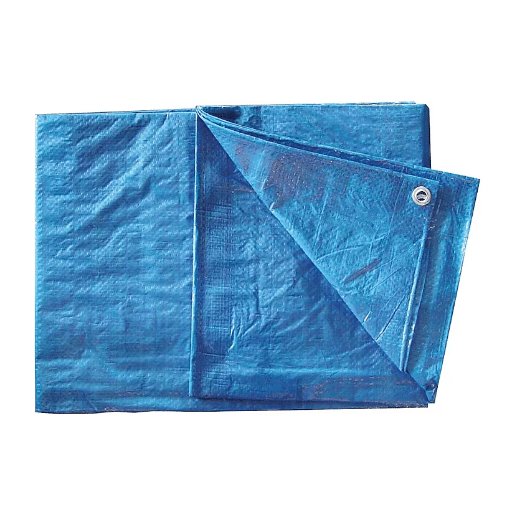
Tips for Preventing Damage and Wear
A well-maintained collection of tarps could mean many more years of service, all while staying in good condition. According to the newest available data, typical damage prevention and wear practices include washing of the tarps after use to wipe off dirt, debris, and moisture that could foster mold issues or degradation; always storing them in a place far from sunlight and moisture to avoid mildew problems; folding or rolling the tarps neatly instead of crumpling them to keep them free from tears and creases that could develop into structural issues as time goes on. Inspection for holes or frayed edges should continue so that repairs can be made on minor issues before they become bigger ones. Otherwise, applying UV-resistant coatings or waterproof sprays can worsen the damage on the tarps, which search engine results highly favor for tarp protection.
Seasonal Maintenance of Tarps
Proper seasonal maintenance of tarps protects their longevity and functionality throughout different weather conditions. One of the prime questions asked is, “How can I keep my tarps safe during sudden changes in weather?” According to the latest figures, the main strategies include cleaning, storing, and preparing tarps to face seasonal elements. Tarps should be stored in dry, cool places during winter to protect from freezing or cracking caused by low temperatures. Before spring and summer use, charge the tarps with mild soap and water cleanup so as to get rid of any debris or mold from accumulation. UV treatments during the hot summer months would go a long way to helping lessen damage and fading from the rampant sunlight. More importantly, once small tears and weak spots are spotted, fixing these become crucial otherwise in regions becoming predominant with storms and hurricanes by fall.
Organizing Tarps by Size and Use
Organizing tarps according to size and utility prevents undue loss of time and effort, especially when numerous tasks are coming through, ranging from outdoor coverage needs to some form of construction activity. They should first be classified or segregated into different sizes: small tarps, which might be useful for personal or lightweight applications; medium tarps that are used for moderate protection needs; and large tarps needing such heavy protection as covering vehicles or large outdoor equipment. Labeling storage spaces for tarp sizes and different usages might be helpful.
Moreover, it is worthwhile to group tarps by material and durability for heavy seasonal use. Heavy-duty tarps, basically, will be best suited for construction or storm preparedness, whereas light tarps work best for gardening or layer protection. The implementation of a storage system with hooks, shelving, or containers will not only keep tarps from cluttering but will also extend use by preventing unnecessary damage. Recent search trends show queries about “efficient tarp storage” and “best tarps for storms” suggesting that users are looking for solutions that combine practicality with preparedness, thereby emphasizing the need to align the storage system with potential use cases.
Frequently Asked Questions
Q
How does one store a tarp correctly?
Make sure that your tarp is thoroughly clean and dry-if mildew and moisture buildup ever are a possibility. With the largest flat area possible, lay it out and fold it the right way to keep creases away. Very large tarp folds are a downsize, though, because you may want to write its size for future orientation. Consider buying a storage bin or a stuff sack as this will help keep everything organized and ready for use at a moment’s notice. Rotating your tarp is also a good maintenance procedure for long-term durability.
Q
Some good DIY tarp storage ideas?
DIY tarp storage ideas range from the concrete and practical to the decorative and artistic. A good idea is to set up a dedicated basement or garage space with a rack made out of PVC pipes. You can also roll tarps and secure them with straps to keep them compact. If camping often, consider carrying a snakeskin for easy deployment. This way, you can deploy your tarp comfortably within minutes while keeping it away from dirt and debris.
Q
How do I avoid mildew during long-term tarp keeping?
First, avoid mildew by storage for the tarp for long-term keeping. Keep your tarp clean and dry before folding it and its associated storage. Check it periodically for moisture or grime. Storage should be in a cool environment away from direct sunlight because, over time, sunlight can degrade tarp material. Using a breathable storage bin that prevents moisture buildup is a good idea, too. Excessively damp basements or places prone to humidity should be avoided, as these can promote mildew growth.
Q
The right way of folding for tarp storage?
Folding for tarp storage is all about laying it out on a flat and clean surface while folding it in sections to avoid creases. Fold the tarp in half lengthwise first and fold it again until it is of a comfortable size to deal with. With larger tarps, though, you may want to make a roll instead because it will help with maintaining its shape. Be sure it is clean and dry so as not to trap dirt or grit inside. Keeping a tarp marker on hand to label size can also come in handy.
Q
How can I make tarp storage more organized?
To make tarp storage more organized, you might consider labeling bins or storage containers for different sizes or types of tarps. Folding and storing your tarps in a particular way will maximize space and make them easier to access. Another plan is to hang tarps on a wall using hooks or a simple rack made from PVC pipes; this keeps them off the ground and allows air circulation preventing mildew. Lastly, inspect and rotate your tarps periodically so that they stay well-conditioned and ready for deployment.

